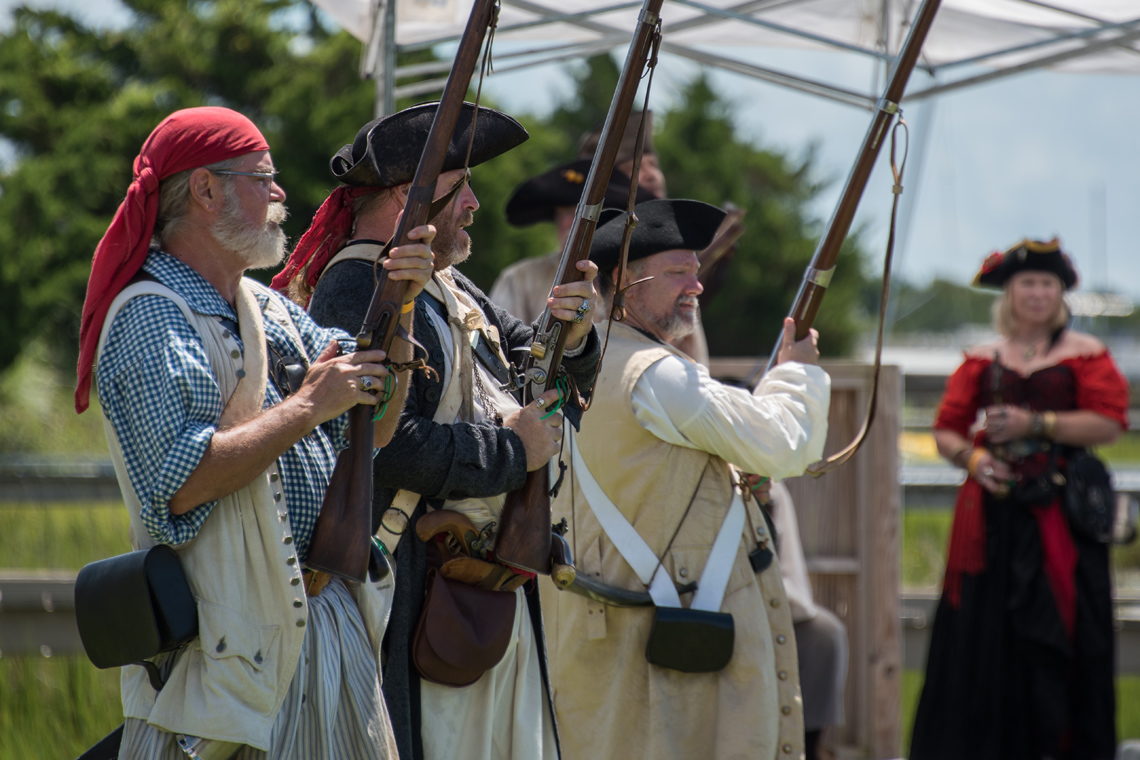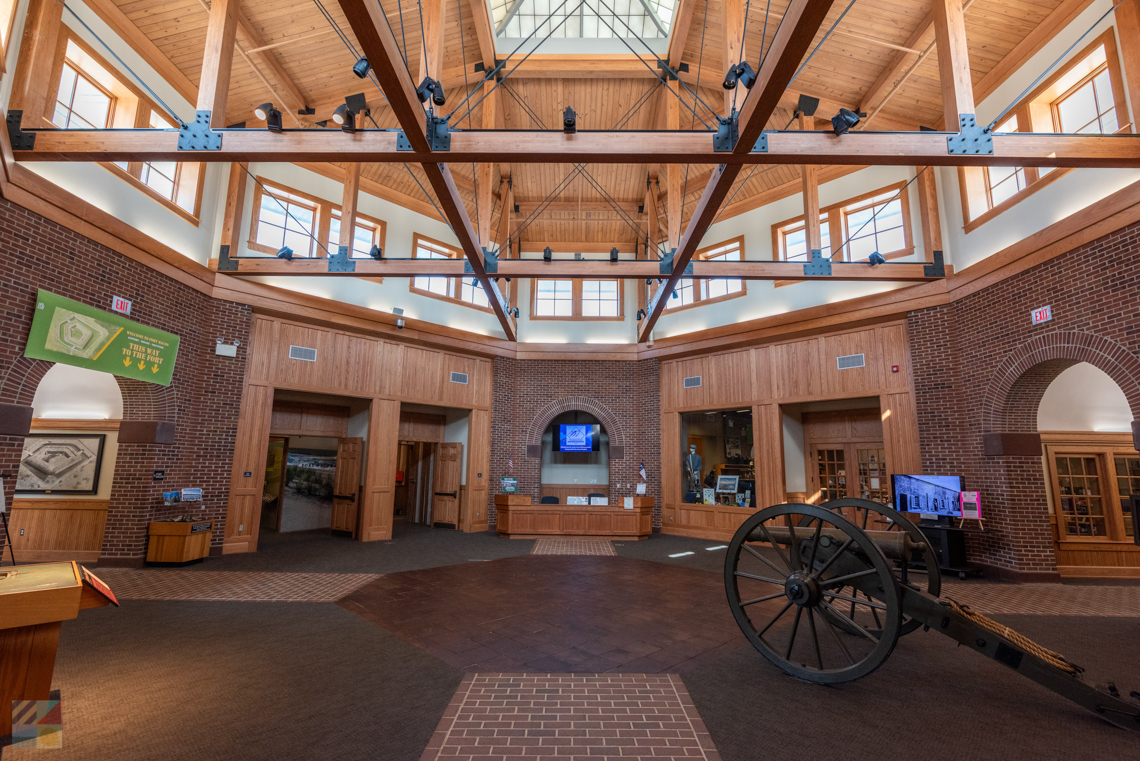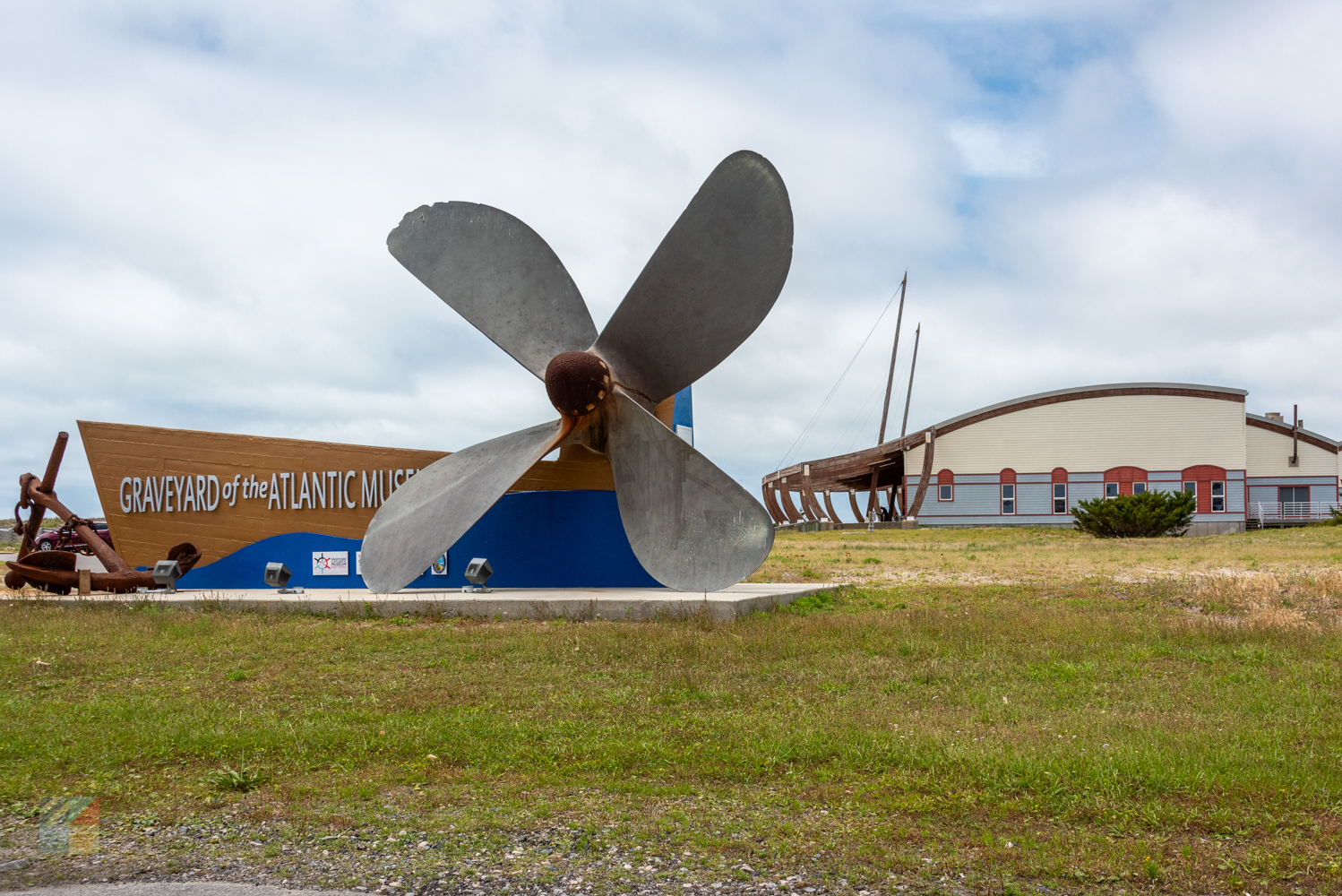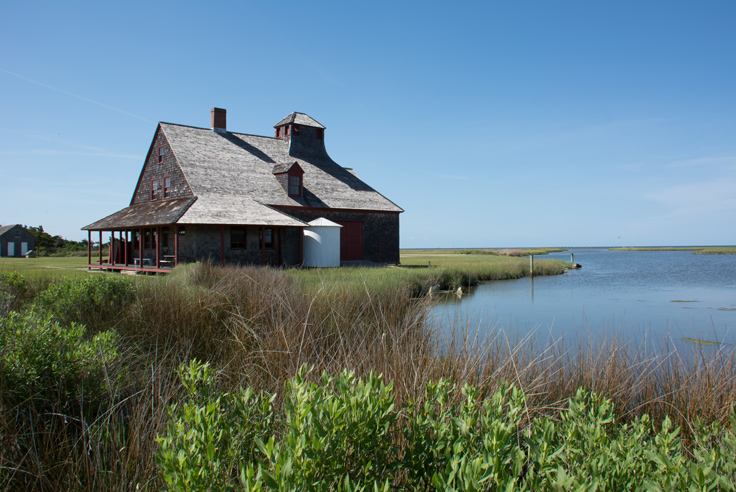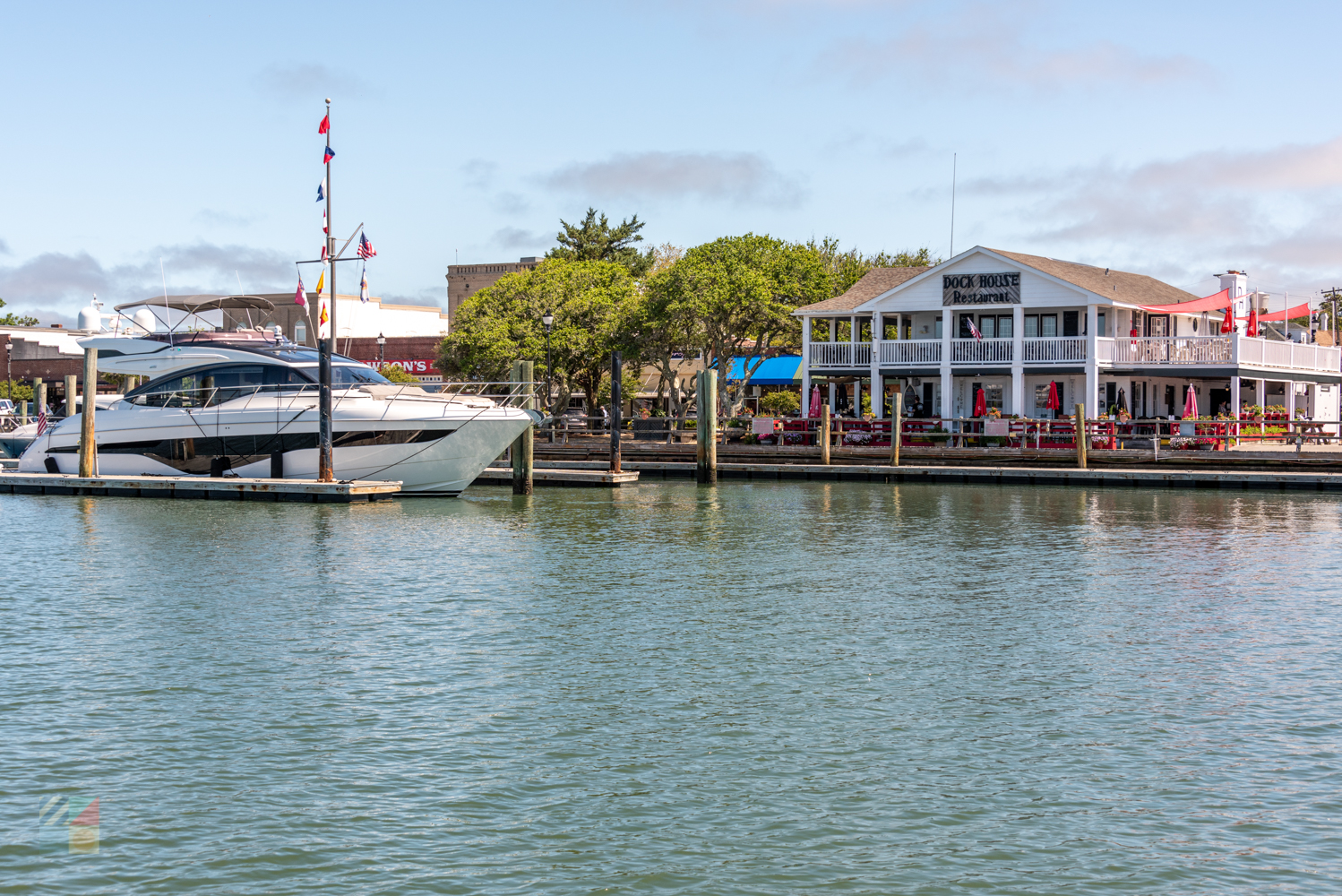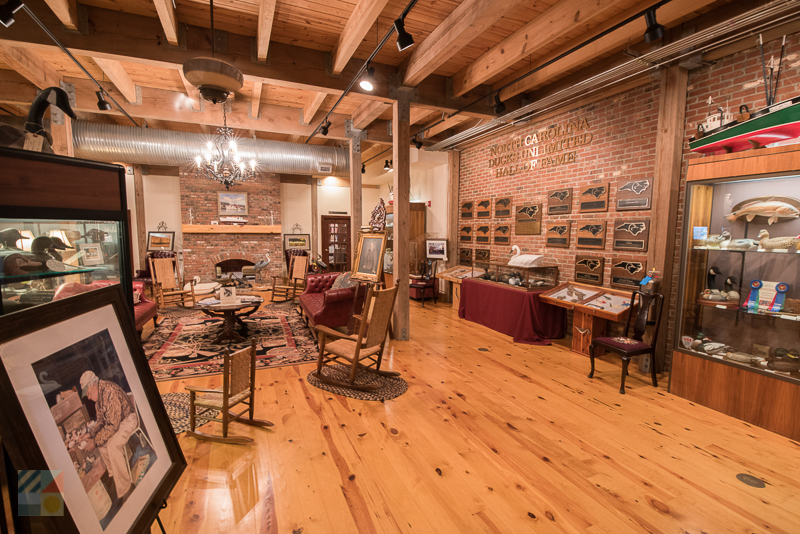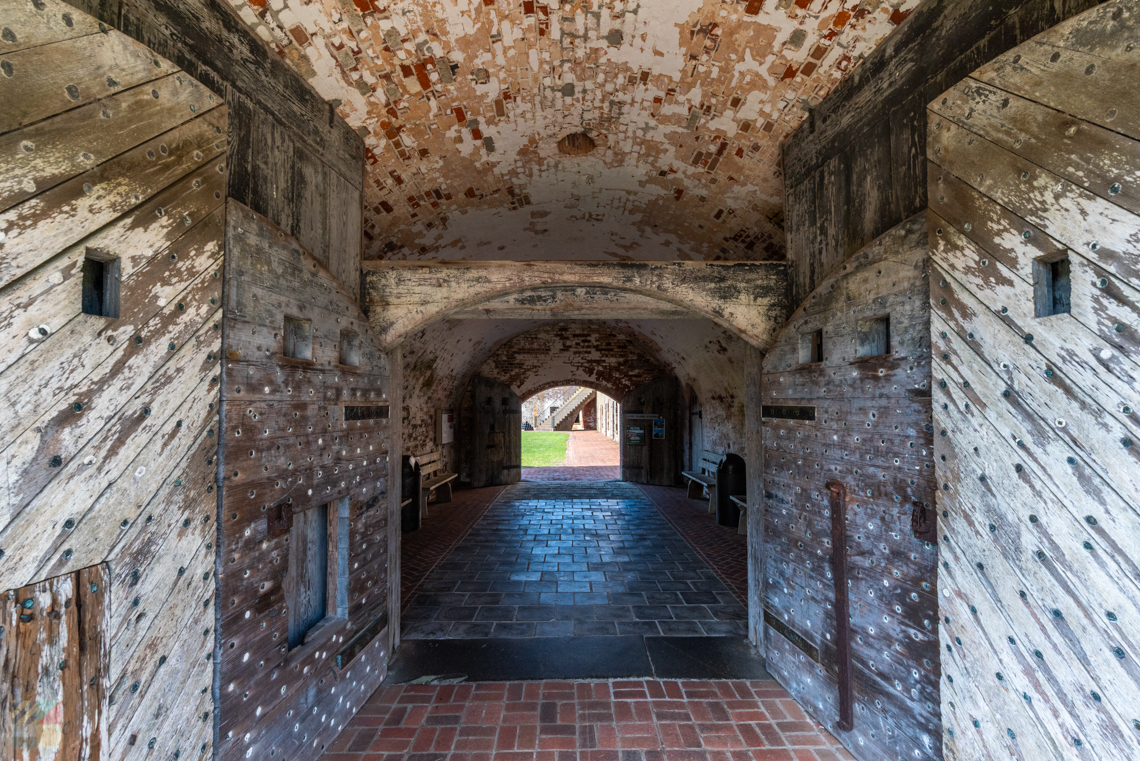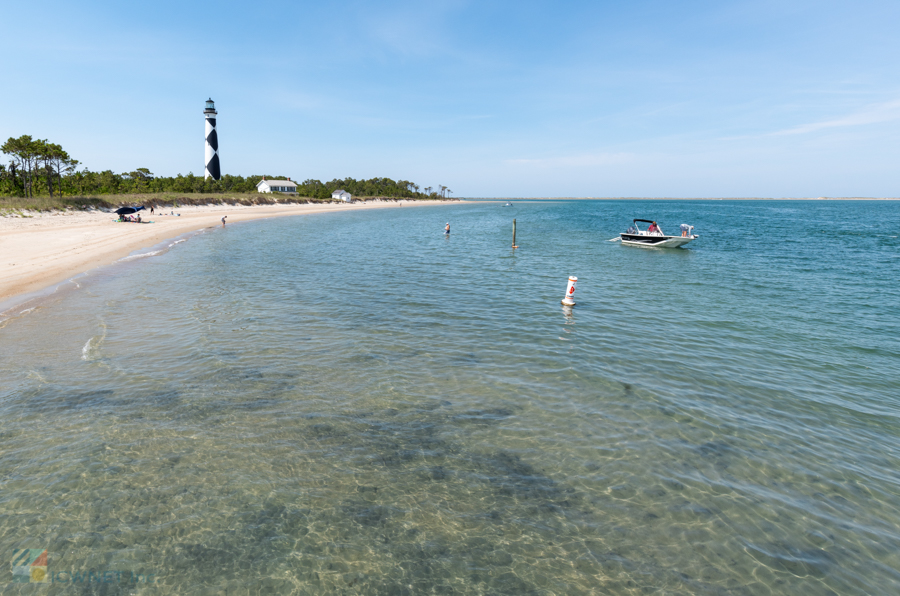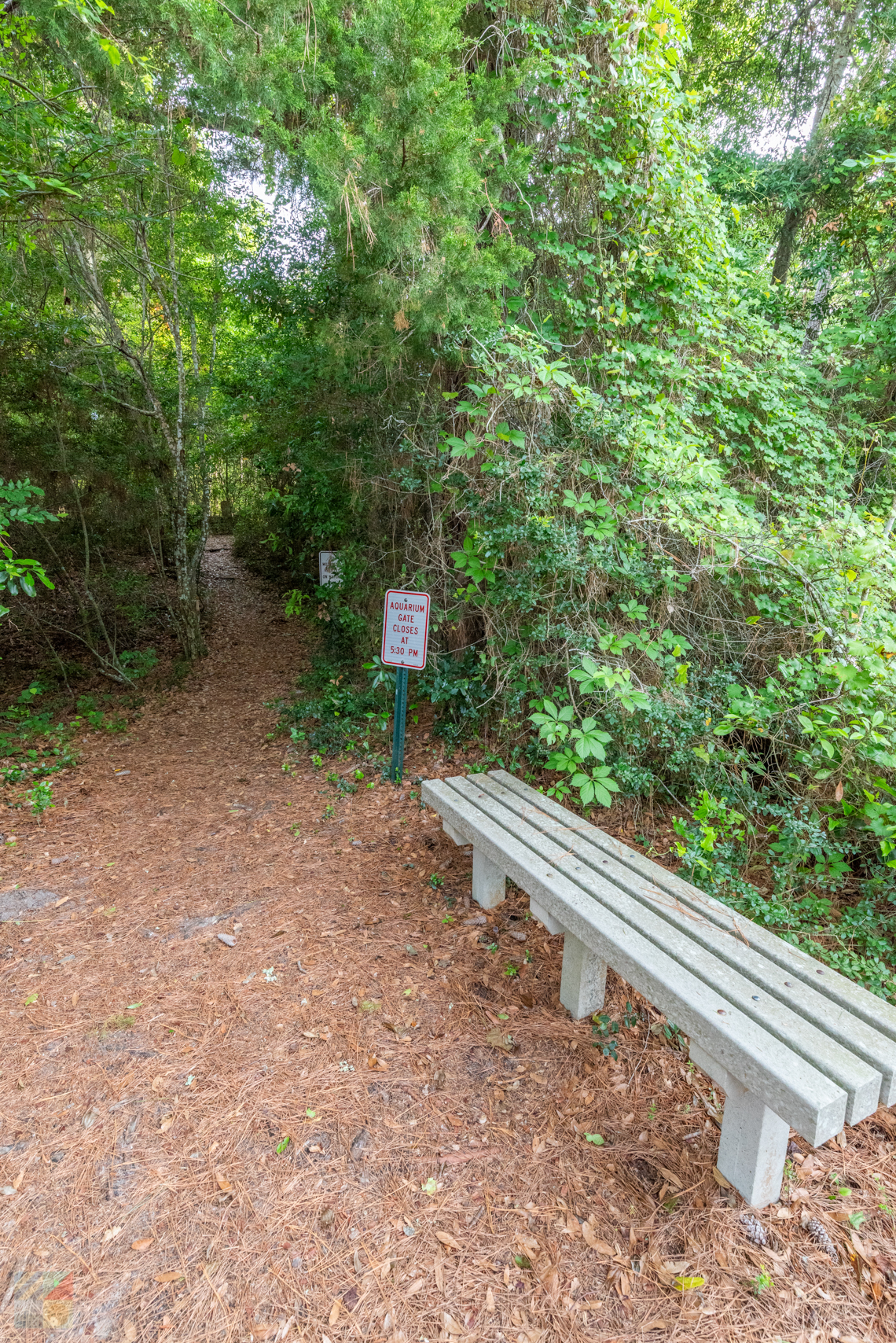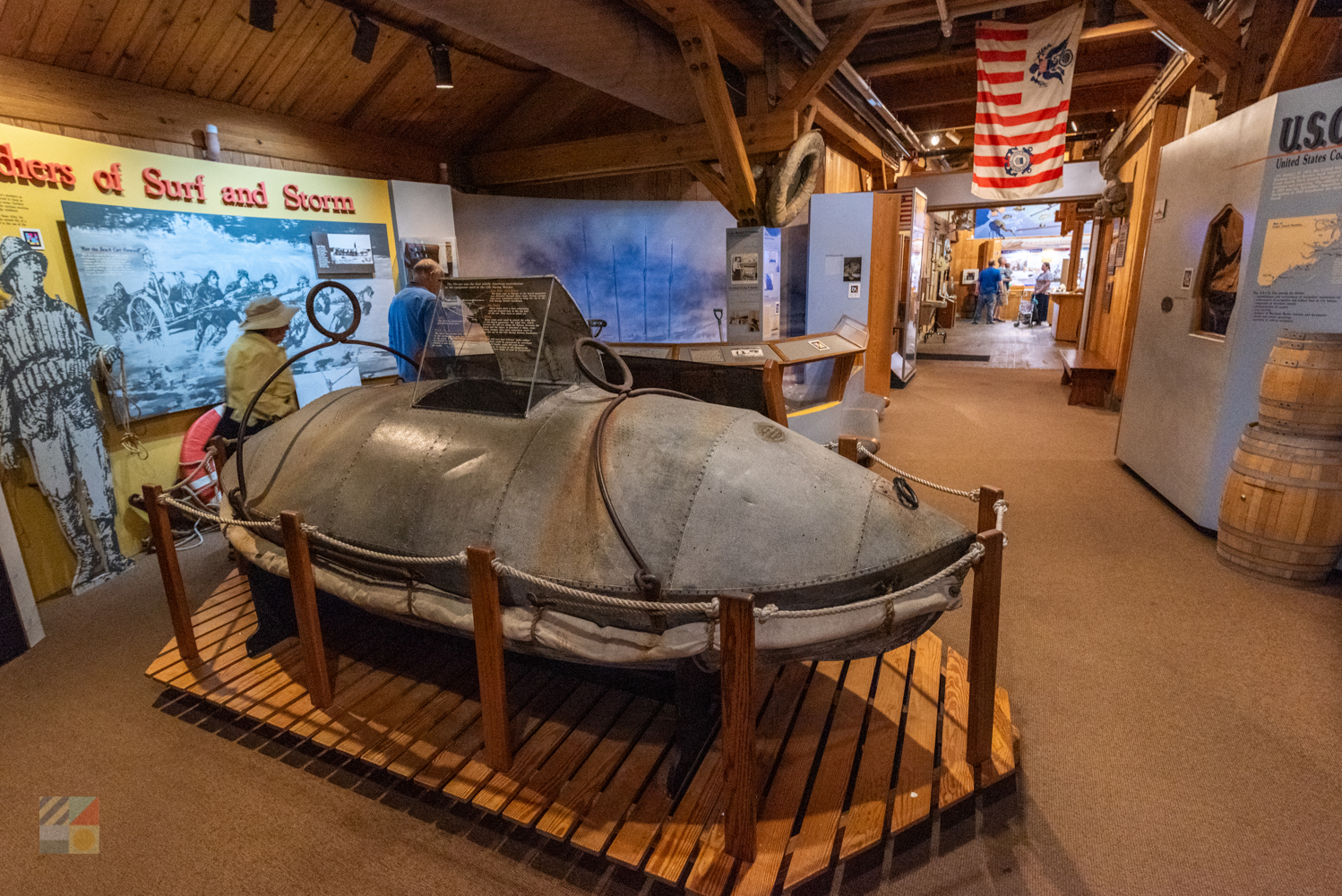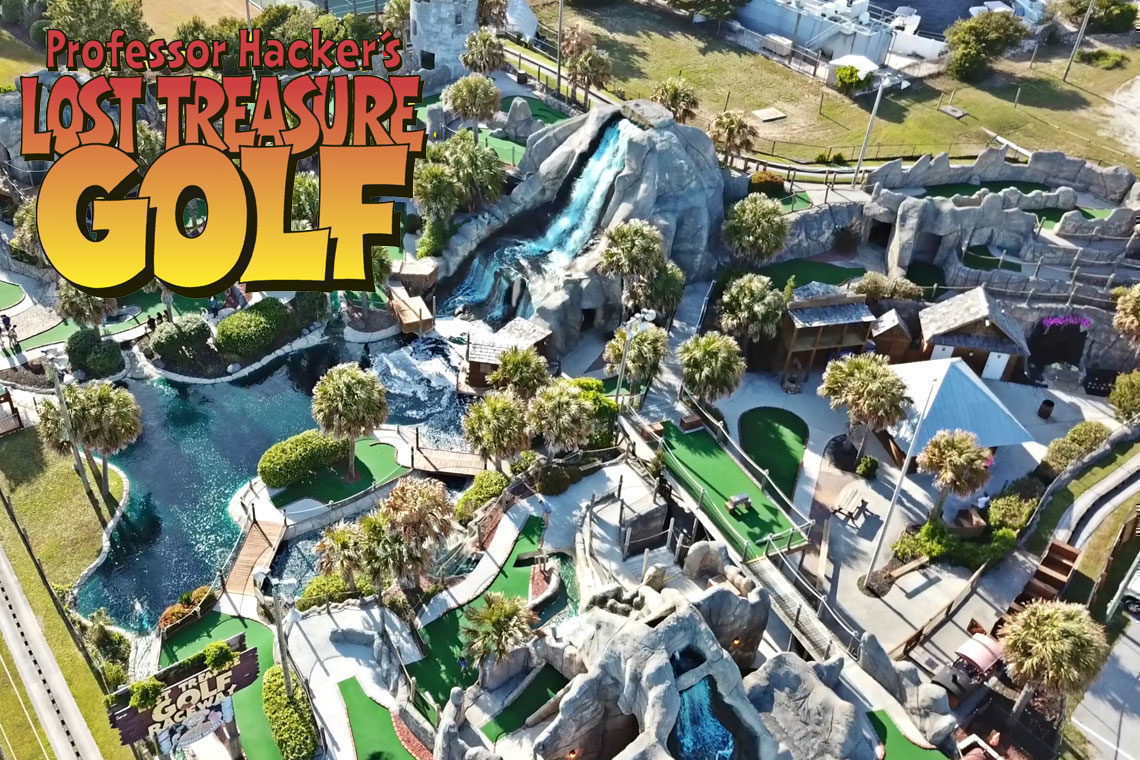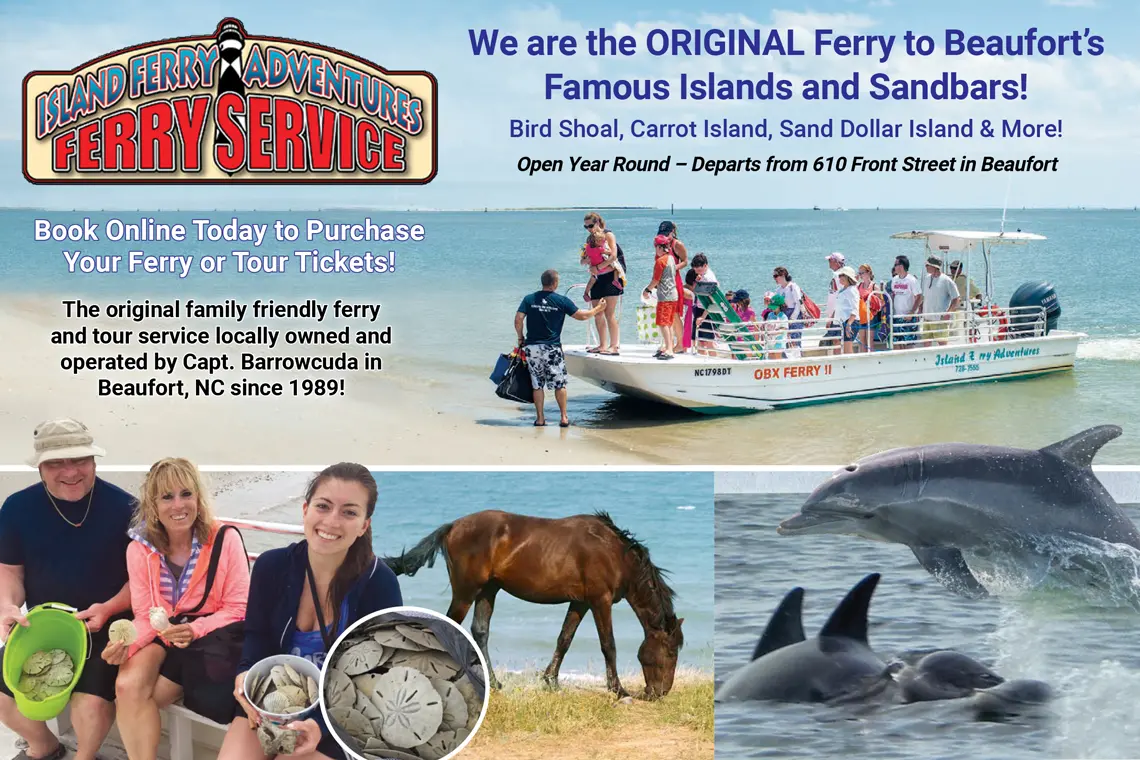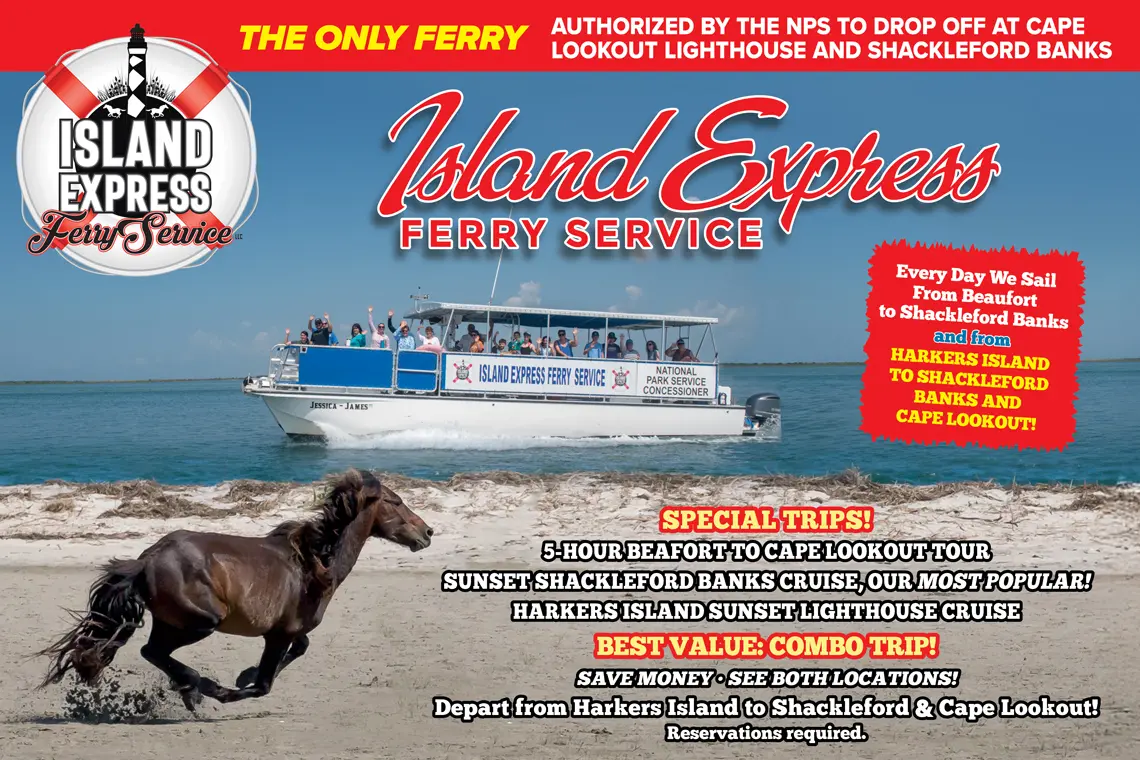Visitors to the Crystal Coast are often surprised to discover the wealth of local museums, landmarks, and ancient sites that pay homage to the region’s centuries of history. Home to some of the oldest communities in the state, most famous (or infamous) North Carolina residents, and a wealth of historical events that helped shape the area, the region is teeming with fascinating stories and legacies that linger throughout the years.
From early Native Americans to pirates and Civil War heroes, there is no shortage of legendary stories along these popular shorelines. And with so many new sites and attractions to discover, from the heart of Downtown Beaufort to the outlying islands, virtually every adventure can turn into a historical exploration on the Crystal Coast.
History of Carteret County and the Crystal Coast
The Crystal Coast lies within Carteret County, which was founded in 1722 and was named in honor of Sir John Carteret, who was later honored as the Earl of Granville, and who was one of the Lords Proprietors of the original North Carolina colony.
Prior to the English’ arrival in the 17th century, the majority of Carteret County and the Crystal Coast was inhabited by the Iroquois-speaking Tuscarora Indians. These Native Americans lived in between the Neuse and the Pamlico Rivers, and the original inhabitants enjoyed a relatively peaceful life where they survived by hunting and fishing in the coastal waters. By 1700, the Native Americans had been more or less replaced by a wide range of settlers, including colonists of Huguenot, German, Scotch-Irish, French, and English descent. Most of these new residents arrived from northern American colonies rather than directly from Europe, and they settled in coastal regions throughout the Crystal Coast, including and especially the newfound community of Beaufort.
Beaufort, NC, which is in the heart of the Crystal Coast, is the third oldest town in the state, and was originally named “Fishtown,” due, naturally, to the exceptional fishing in the area. It was later named after Henry Somerset, Duke of Beaufort, and was one of the original hubs of the Crystal Coast area. Areas outside of Beaufort in the central or western portions of Carteret County were typically large tracts of land that were used primarily as farm lands, or plantations. Unlike other regions of the south, however, the plantation owners in these regions didn’t build the large grand southern homes, and instead set up smaller houses that were brick, plain, and which didn’t exude grandeur.
From its earliest roots, Carteret County was at the forefront of global trade, due primarily to its locale close to the water and rivers that connected the area with other port communities around the country. The local plantations produced tobacco, grains, meats, and of course fish, which were exported to England. Over time, lumber because a major export as well, to the region’s inland forests.
As more people trickled in, the region began to grow, with a school and church being established in the central town of Beaufort by the 1720s. Many local residents would go on to serve in the Revolutionary War, and in the decades that followed, the community grew and grew as the area’s reputation as a thriving port town blossomed.
By the mid-1800s, the Crystal Coast had grown to include several major port towns, including the already well-established Beaufort, Portsmouth Island to the north, and Morehead City, which was officially started as a railroad town in 1858. The neighboring barrier island shoreline was also the home of an instrumental Civil War fort, the 1820s constructed For Macon, which was found just off the mainland of Carteret County.
It wasn’t until the late 1800s and 1900s that Carteret County became less revered as a port town and better known as a vacation destination – a designation that was helped by the newfound moniker the “Crystal Coast” that was coined as part of a tourism campaign by the Carteret County Tourism Development Authority. As the former desolate barrier islands, which were once privately owned by a handful of landowners, began to be sold to developers, and hotels and vacation rental homes popped up along the landscape, the Crystal Coast’s reputation as a tourism destination grew.
By the late 20th century, the majority of the Crystal Coast had been developed, with downtown revitalization projects bringing former port communities like Morehead City to life. While Beaufort and Morehead City still remain popular “port” destinations, with deep ties to their former heydays as points of commerce, not all the port towns that thrived in the Crystal Coast survived the centuries. Portsmouth Island, which was once one of the busiest port towns in Eastern North Carolina, eventually dissipated as the inlet closed and business went elsewhere, and the last two residents finally left the island for good in the 1970s.
With the exception of Portsmouth Island and the Cape Lookout National Seashore, however, (which has been purposely preserved and remains undeveloped), the rest of the Crystal Coast is a booming and vibrant community that celebrates its earliest coastal roots from the local museums to the established docks where maritime traffic still thrives.
Historical Spots within the Crystal Coast
History truly surrounds the Crystal Coast, and no trip is complete without a visit or an understanding of these iconic destinations and regions where the stories span the centuries.
Graveyard of the Atlantic Museum
The ocean waters off the southern and northern Outer Banks have a deadly reputation that has earned the region the nickname of the “Graveyard of the Atlantic.” For more than five centuries, vessels of all sizes have met their end within these waters, due to a series of shifting sandbars, two major transatlantic currents, (the Labrador Current and the Gulf Stream), and a steady series of hurricanes, nor’easters, and other coastal storms. The first shipwreck recorded in the Graveyard of the Atlantic occurred in the 15th century, and the area grew even deadlier during World War I and World War II, when dozens of German U-Boats hid just below the surface, and blasted both American and British ships that tried to pass through the coastal region. Though modern navigation techniques have made the area much safer for present-day mariners, the ocean floor off the Crystal Coast is still littered with the remnants of hundreds if not thousands of shipwrecks that were lost over the years.
Portsmouth Village on Portsmouth Island
Located on the northern tip of the Cape Lookout National Seashore, Portsmouth Village is a perfectly preserved ghost town of a village that was once one of the most thriving port communities on the Crystal Coast. Established in 1753, the town had a peak population of 685 residents by 1860, despite being just 250 acres in area, and was a major hub for local trading vessels as well as commercial fishermen. The population began to dwindle after the Civil War, and the area experienced another blow during the Great Hurricane of 1933. With the inlet closing, and the local Portsmouth Island Lifesaving Station decommissioned in 1937, Portsmouth Village slowly started to fade as more and more residents abandoned the isolated island. The last two residents – two elderly ladies who had been there all their lives – finally left Portsmouth in 1971. By this time, the island had been acquired by the National Park Service and incorporated into the Cape Lookout National Seashore, and today, visitors can still tour the original buildings that were once the focal point of the small village.
Downtown Beaufort
Founded in 1709, Beaufort is the third oldest town in North Carolina, and is one of the earliest and originally the busiest port communities of the Crystal Coast. The historic downtown area, which was mapped and plotted roughly three centuries ago and which still maintains its original property lines, is home to a wealth of historic buildings and structures which includes the Beaufort Historic District – a collection of 16 buildings that serve as notable examples of Queen Anne, Greek Revival, and Gothic Revival style architecture, and which officially became part of the National Register of Historic Places in 2003. Downtown Beaufort is also notable as one of the favorite local haunts of Blackbeard the Pirate during the early 1700s, and in 1718, the pirate famously ran his favorite ship the Queen Anne's Revenge as well as his sloop Adventure aground just off of modern-day Beaufort Inlet.
Harkers Island
Harkers Island, which was populated for centuries by the Coree tribe well before the first colonists arrived, was first established in the early 1730s by Ebenezer Harker, a new settler who hailed from Massachusetts. Ebenezer built the original “Harker Plantation” and a boat building facility on the small island, and eventually sold or deeded sections of the once huge tract of land at the end of his lifetime. The island remained sparsely populated until the late 1800s, when the population blossomed, and the community built a church, a fish oil factory, and a small milling facility. By the 20th century, the local residents were gaining a reputation for their intricate knowledge of hunting and fishing grounds in the region, as well as the handcrafted decoys that were carved and utilized for these coastal excursions. Though the island remains relatively small – with a population that hovers around 1,200 – the area’s fame as a decoy carving Mecca remains, and generations of islanders continue to practice this time-tested and traditional craft.
Fort Macon State Park
Fort Macon, which is located on the eastern borders of Atlantic Beach, is a historic fort that was first constructed in 1826, and which served as an instrumental site of contention during the Civil War just 30 or so years later. Featuring a five-sided perimeter of brick and stone as well as 25 vaulted rooms, the fort was constructed to protect Beaufort and the other port communities from pirate attacks, but would later be used as a stronghold for Confederate soldiers during the Civil War. The fort was seized by North Carolina militia members who were connected with the Confederate Army just two days after the start of the war in 1861, and was held by the Confederacy until it was bombarded by Union forces in 1862, and eventually fell on April 25th. The US Army would go on to occupy the fort in the late 1870s during the Reconstruction Era, and in 1936, the fort – which was now an abandoned military surplus property – would be bought by the state and transformed into North Carolina’s first functioning state park.
Cape Lookout National Seashore
The Cape Lookout National Seashore, which runs for 56 miles from northern Portsmouth Island to the Shackleford Banks, was first established in 1966 by the National Park Service. The area is most famed for two historic attractions – the Cape Lookout Lighthouse and the wild horses of Shackleford Banks. The diamond patterned Cape Lookout Lighthouse was built in 1859 to stand guard over the Crystal Coast and the deadly Graveyard of the Atlantic, while the wild horses that freely roam the seashore are thought to be descendants of Spanish mustangs that were shipwrecked on the barrier island shoreline more than 500 years ago. In addition to the wild horses and the lighthouse, Cape Lookout National Seashore is also home to a handful of historic and now deserted former communities, including Cape Village near the Cape Lookout Point, and Portsmouth Village on the northern end of the North Core Banks.
Theodore Roosevelt State Natural Area
The Theodore Roosevelt State Natural Area was the original home of a wealthy New York woman, Alice Gene Hoffman, who purchased the property in 1917 and moved there permanently in 1938. Upon her death in 1953, she willed the home and surrounding land to her niece, Eleanor Butler Alexander-Roosevelt, who was a common visitor to the estate. Much later, Eleanor and her husband, Theodore Roosevelt, Jr., gave the property to their grandchildren, who in turn donated the 298 acres to the state of North Carolina in honor of their grandfather, Theodore Roosevelt. Because the donation stipulated that the site be retained in its natural state, the area today is a popular nature reserve with two nature trails named after Alice Hoffman and Theodore Roosevelt. The area is located just behind the North Carolina Aquarium in Pine Knoll Shores, and still boasts all the natural beauty that attracted Ms. Hoffman to the area decades before swarms of visitors would discover the Crystal Coast.
Where to Learn More about Crystal Coast History
Visitors who want to dive deeper into the history of the Crystal Coast will find ample museums and attractions that explore the local culture in-depth. Check out these sites that are “must visit” destinations for any visitor with a love of history.
North Carolina Maritime Museum at Beaufort
The North Carolina Maritime Museum at Beaufort is stocked with more than three centuries of local history, and has a nicely central location in the heart of historic Downtown Beaufort. Historical features within the museum include a special exhibit on Blackbeard the Pirate with artifacts from his ship the Queen Anne’s Revenge, an exhibit on the history of the US Lifesaving Service and present-day Coast Guard, exhibits on the region’s maritime history, and representative historic boats that were used in the area’s rich fishing and hunting industries. The museum is open year-round and often has educational talks or programs that focus on a particular aspect or chapter in the area’s history.
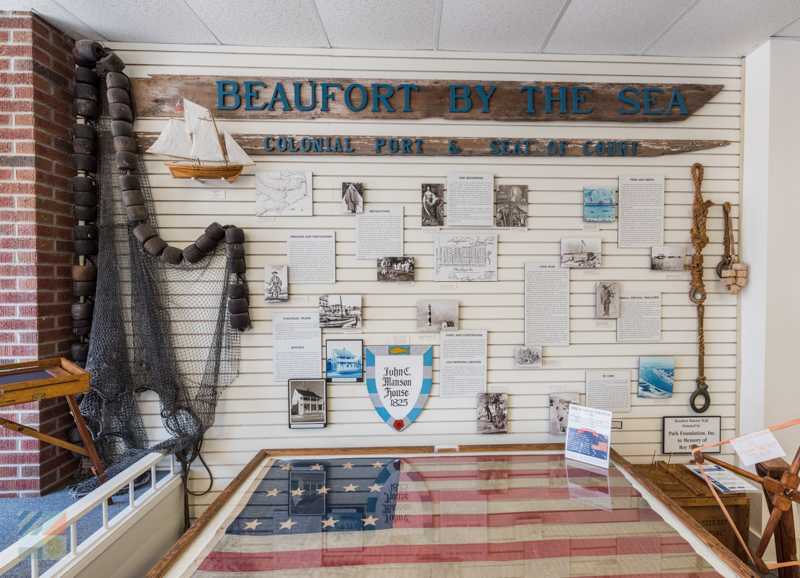
Beaufort Historic Site
The Beaufort Historic Site, which is located in the heart of Downtown Beaufort, is home to nine historic homes and buildings that date back to the 1700s and 1800s. Points of interest within the enticing complex include the 1778 Leffers Cottage, the 1796 Carteret County Courthouse, (which is also the oldest wood-framed courthouse in the state), the 1825 John C. Manson House, the 1829 Old Jail, (which remained operational until 1954), and the 1859 original doctor’s office, apothecary shop, and adjacent herb garden. Tours are readily available of the Beaufort Historic Site and the town of Beaufort itself through guided walks, or onboard an original English double decker bus.
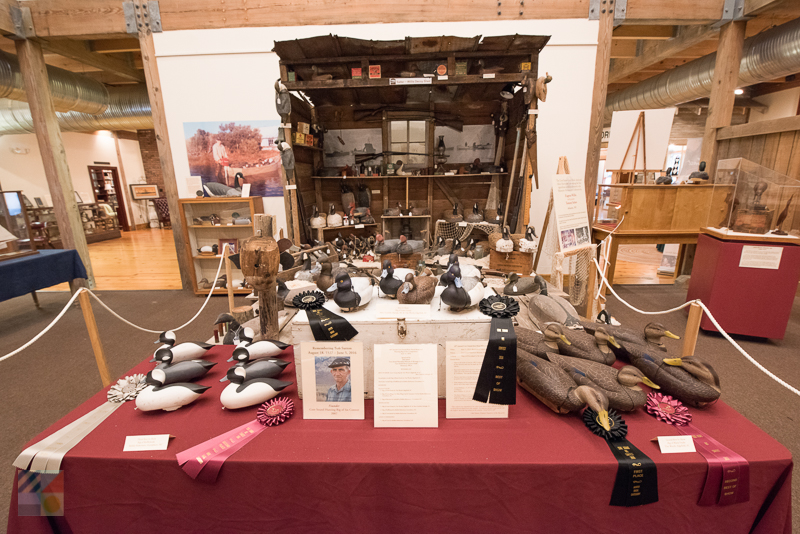
Core Sound Waterfowl Museum
The Core Sound Waterfowl Museum and Heritage Center boasts a series of exhibits that celebrates the cultural traditions of the legendary “Down East” community. At this museum that’s located in scenic Harkers Island, visitors can see live demonstrations of decoy carving, and explore a series of exhibits dedicated to decoys, boat building, and commercial fishing. The museum regularly hosts seasonal programs and events so that visitors can delve deeper into this fascinating maritime community where life by the water is a centuries-old art form.
Tips and Tricks for Uncovering the Crystal Coast History
- There are a number of tours available that can shed a spotlight on the history of the Crystal Coast. Check out the walking tours of Downtown Beaufort, or embark on a water tour of the Shackleford Banks and Cape Lookout National Seashore for an opportunity to see the historic and famed wild horses up close and personal.
- Divers will find centuries of history under the surface, and a diving expedition into the offshore waters can lead to encounters with countless shipwrecks and relics that lay at the bottom of the Graveyard of the Atlantic Museum. A popular Diving Center is located in the heart of downtown Morehead City, which provides a variety of trips to the most intact and fascinating ancient shipwrecks that can only be reached by travelling well offshore, and descending deep underwater.
- When driving along the Crystal Coast, be sure and look for the brown signs! North Carolina marks historic sites of interest with brown or white signs that outline the site’s particular importance.
- Be sure and check local calendars for special events that coincide with your trip. Sites like Fort Macon host regular “cannon firings” or Civil War reenactments, while even isolated destinations like Portsmouth Village host an annual “Portsmouth Island Homecoming” that is open to all visitors.
- Want a tour of history? Go right to the source. Communities like Downtown Beaufort, Downtown Morehead City, and even Harkers Island are teeming with historic buildings and structures, which can all be discovered with an easy drive or stroll around the neighborhood.
The Crystal Coast is overflowing with stories that range from the deadly waters that are found just offshore to the busy port towns that now serve as popular tourist destinations. From the early roots of the country’s first settlement in Beaufort, to the tumultuous battles of the 20th Century World Wars, new visitors will soon discover that a trip to the Crystal Coast is a veritable discovery of the centuries of stories that shaped the nation.
Jump aboard the pirate ship "REVENGE" at 600 Front Street in Beaufort, North Carolina. Our interactive voyages offer fun and adventure for families and swashbucklers of all ages. Come join our crew, take part in a pirate adventure, and enjoy festive...
Visitors of all ages will have a blast at this destination that is designed for great times along the Crystal Coast shoreline. Professor Hacker's Lost Treasure Golf and Raceway is situated in the centrally located beach community of Salter Path, and...
Discover a treasure or two to serve as a timeless reminder of your getaway to the Crystal Coast with a visit to one of the most unique jewelry stores in the Carteret County region, J Chalk Designs. Specializing in fine pieces that are truly one of a...
Bird Shoal, Carrot Island, Sand Dollar Island & more! Dive into an exploration of some of the Southern Outer Banks’ most remote shorelines with an excursion that’s led by Island Ferry Adventures. Featuring both transport to the...
Island Express Ferry Service LLC is the only authorized concessionaire to drop off at Cape Lookout Lighthouse and Shackleford Banks! Offering departures from both Beaufort and nearby Harkers Island, Island Express Ferry Service serves as the...
Take a quick and scenic ferry ride with your experienced guide over to the pristine Outer Banks Island of Shackleford Banks, which is part of the Cape Lookout National Seashore. There, you are introduced to the wild horses of Shackleford...
